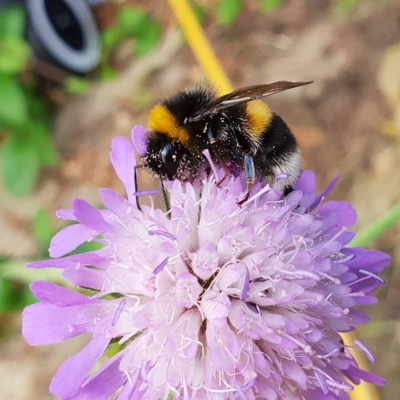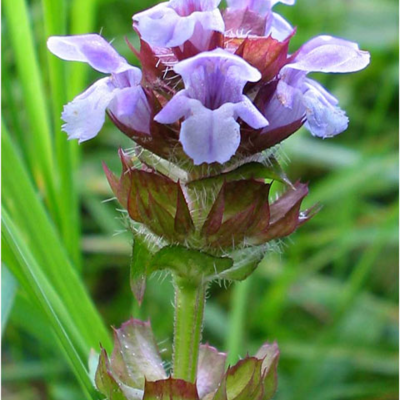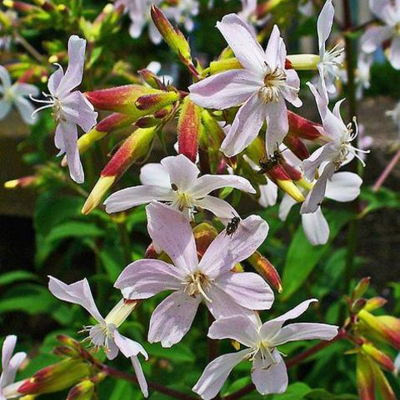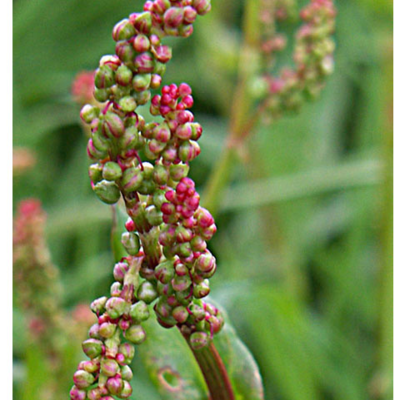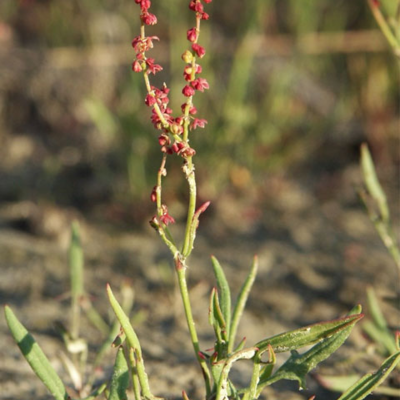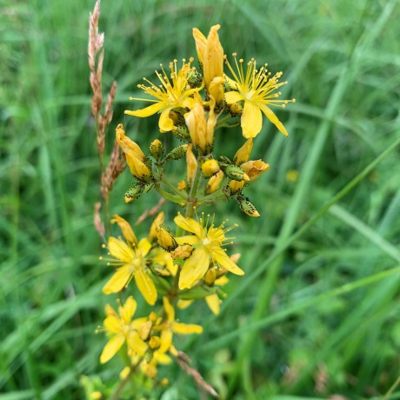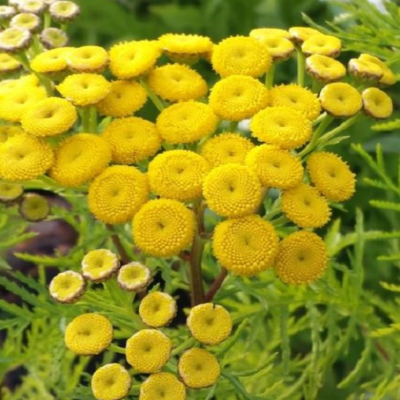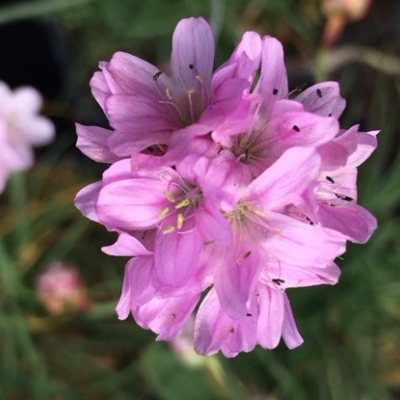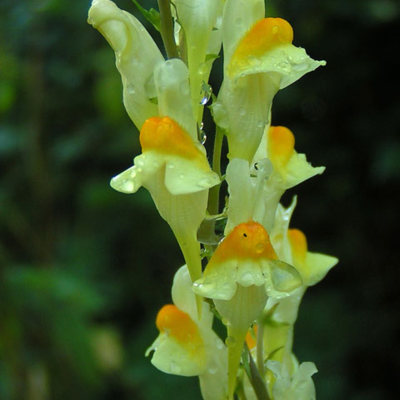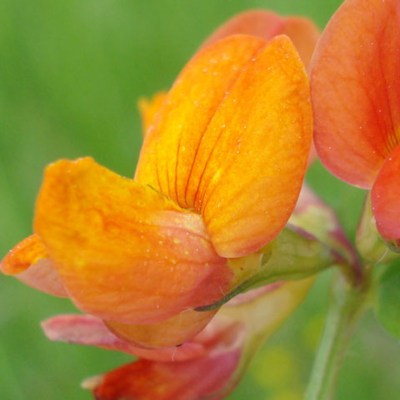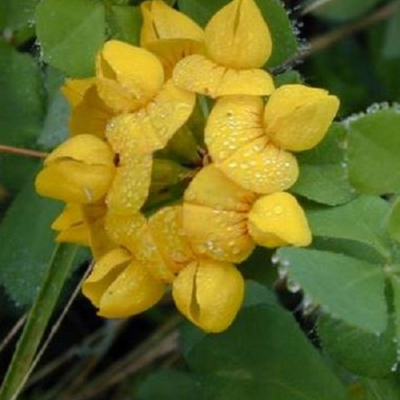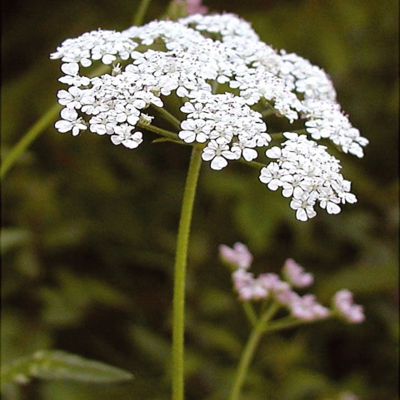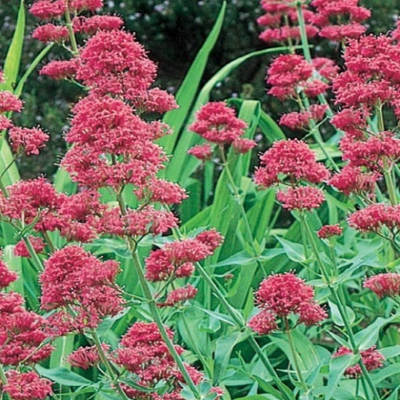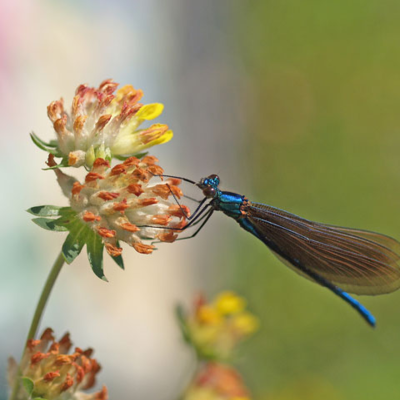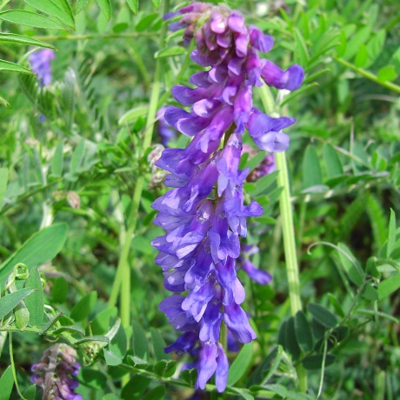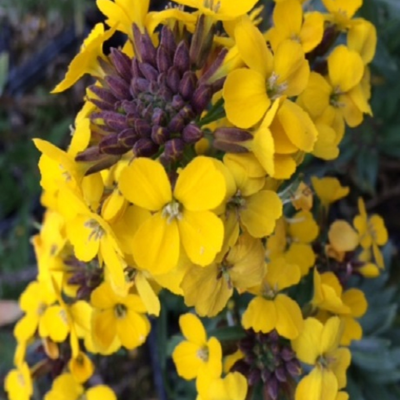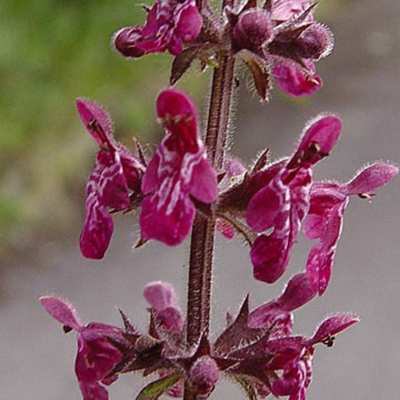Wildflower Plants A to Z
Choose from our entire range of over 100 wildflower plug plants, expertly grown in our very own nursery from high quality, UK native wildflower seed. Our wildflower plugs are ready to be planted straight out into your garden or meadow as soon as they arrive, all year round. Buying individual wildflower plants is one of the best ways to establish your chosen wildflower species, planted individually or as part of a more diverse meadow created from our range of wildflower seeds.
Don't hesitate to get in touch to speak to one of our experts or request a catalogue to view our full range. Ordering regularly or looking for large volumes? Click here to apply for a trade account today - we review all applications within one working day.
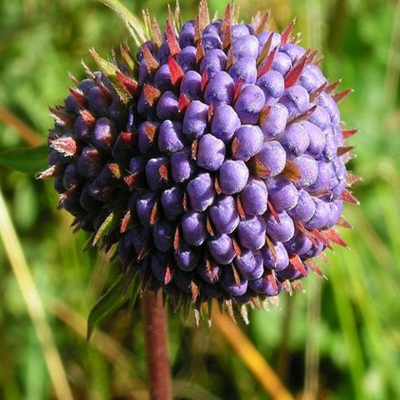

Plants for Pollinators highlights plants selected by the RHS as scientifically proven to tackle the declines in bees, butterflies and other pollinators.
Named after from its shallow roots, said to have been bitten short in folklore, the Devil’s Bit Scabious is a devilishly good addition to a loamy spot in the garden. Produces rounded, purple-blue ‘pincushion’ flower heads on upright stems. A hardy and alluring plant which attracts bees and butterflies.
- Type: Perennial
- Height: 50–80cm.
- Flowers: June-September
- Soil Requirement: Moist but well-drained
- Light Requirement: Sun or partial shade
- Natural Habitat: Bogs, woodland, heathlands
- Also known as: Blue Bonnets, Bobby Bright Buttons, Fore-Bit

Plants for Pollinators highlights plants selected by the RHS as scientifically proven to tackle the declines in bees, butterflies and other pollinators.
This dainty-looking globe flower produces an intricate pattern of bluish-lilac petals: the innermost flower, a soft-looking cluster of miniature florets, is framed by long and papery outer florets! A magical addition to a meadow, especially when mixed with other light-coloured wildflowers.
- Type: Perennial
- Height: 30–90cm.
- Flowers: July-September
- Soil Requirement: Well-drained
- Light Requirement: Full sun
- Natural Habitat: Grasslands, verges
- Also known as: Black Soap, Egyptian Rose, Lady’s Cushion
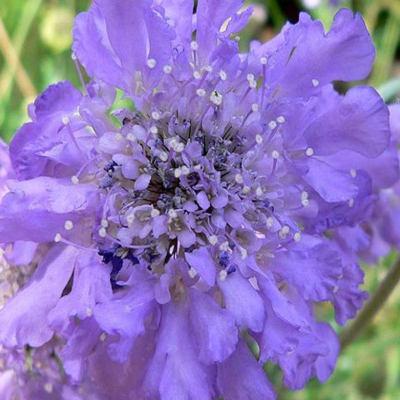

Plants for Pollinators highlights plants selected by the RHS as scientifically proven to tackle the declines in bees, butterflies and other pollinators.
Though smaller than certain other scabious, these compact, cluster-growing flowers are best suited for complimenting beds and borders rather than taking centre stage, whilst still bearing the hardiness and pretty, periwinkle blue florets of its brethren. In fact, the Small Scabious bears five-petalled florets rather than the regular four- sometimes, it’s the little things that matter.
- Type: Perennial
- Height: 60–70cm.
- Flowers: July-August
- Soil Requirement: Well-drained, chalky
- Light Requirement: Full sun
- Natural Habitat: Grasslands, verges
- Also known as: Curl-Doddy, Lilac-Flowered Scabious

Plants for Pollinators highlights plants selected by the RHS as scientifically proven to tackle the declines in bees, butterflies and other pollinators.
This whisical wildflower's short spikes of violet and burgundy beauty are just as pretty as its name! Though it's named for its medicinal uses, we think that there's nothing more rejuvinating than the sight of this multicoloured majesty flooding beds or wild meadows, as it naturalises to any environment and self-seeds readily.
- Type: Perennial
- Height: 20–30cm.
- Flowers: June-September
- Soil Requirement: Well-drained or moist
- Light Requirement: Full sun or partial shade
- Natural Habitat: Grasslands, woodlands
- Also known as: Blue Lucy, Heart of the Earth, Thimble-Flower
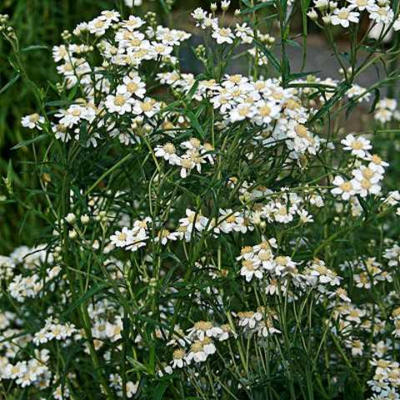

Plants for Pollinators highlights plants selected by the RHS as scientifically proven to tackle the declines in bees, butterflies and other pollinators.
These branches of pearly-white petals, framing fuzzy cream florets, are nothing to sneeze at! Named for its strong scent, its leaves can also be used to repel harmful insects (though it’s still perfect for pollinators), and it’s sometimes used as a herbal remedy. Hardy and drought-resistant.
- Type: Perennial
- Height: 25-50cm.
- Flowers: July-September
- Soil Requirement: Moist but well-drained
- Light Requirement: Full sun or partial shade
- Natural Habitat: Marshes, water margins
- Also known as: Ball Of Snow, Goosetongue, Seven Years’ Love
The subtly sweet-scented Soapwort was named as it can be used to make soap, but its clusters of pristine white and pale pink petals bring to mind a bubble bath, washing up beds and borders as it self-seeds easily. A very useful and hardy herb to have around! Avoid placing near fish ponds.
- Type: Perennial
- Height: 50-70cm.
- Flowers: June-September
- Soil Requirement: Moist but well-drained
- Light Requirement: Full sun
- Natural Habitat: Footpaths, river banks, hedges
- Also known as: Boston Pink, Jill-Run-By-The-Street, World’s Wonder
These spikes of small, scarlet-and-fuschia flowers really spice up a wildmeadow: not only that, they bring in bees and self-seed with little fuss, making them the perfect plant to pepper in! Their attractive arrow-shapes leaves also taste tart when eaten.
- Type: Perennial
- Height: 15–60cm.
- Flowers: May-August
- Soil Requirement: Well-drained
- Light Requirement: Full sun
- Natural Habitat: Grasslands, woodlands, verges
- Also known as: Sour Ducks, Vinegar Plant
A shorter, self-seeding sorrel which bears the same upright, slender stems of scarlet and hot pink petals as its counterparts. Its small but vivid flowers add a lot of flavour to a garden, and perhaps even more flavourful are its sword-shaped basal leaves, which can even be used in making food!
- Type: Perennial
- Height: 7–25cm.
- Flowers: May-August
- Soil Requirement: Well-drained, acidic
- Light Requirement: Full sun
- Natural Habitat: Grasslands, woodlands, verges
- Also known as: Sour Weed
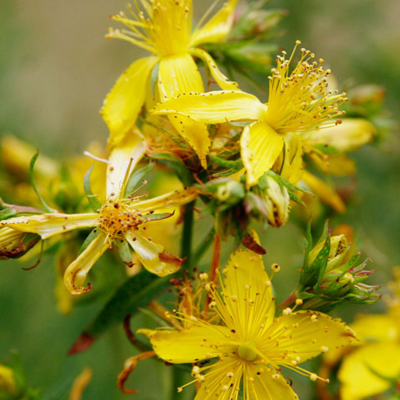

Plants for Pollinators highlights plants selected by the RHS as scientifically proven to tackle the declines in bees, butterflies and other pollinators.
Looking at its golden, star-shaped flowers and showoffish nectar-rich stamens which are perfect for pollinators, it's no wonder that St John's Wort is famously revered in a variety of religions and myths- even today it's highly valued in herbalism! A great plant to grow for a gorgeous golden glow.
- Type: Perennial
- Height: 30–60cm.
- Flowers: June-September
- Soil Requirement: Moist but well-drained
- Light Requirement: Full sun or partial shade
- Natural Habitat: River banks, meadows, hedgerows
- Also known as: Cammock, Devil’s Scourge, Rosin Rose
Distinguished by its namesake hairy leaves and stem as well as the peppered dark gland across their sepals, this specific specie of St. John’s Wort grows taller and with larger, pale-yellow flowers in clustered spikes. A fickle flower that prefers sunny, calciferous soils unlike the common St. John’s Wort, but a garden or grove decorated with these glorious golden-petalled pillars is a rich enough reward.
- Type: Perennial
- Height: 60-100cm.
- Flowers: July-August
- Soil Requirement: Moist but well-drained
- Light Requirement: Full sun
- Natural Habitat: Open forests, damp grasslands
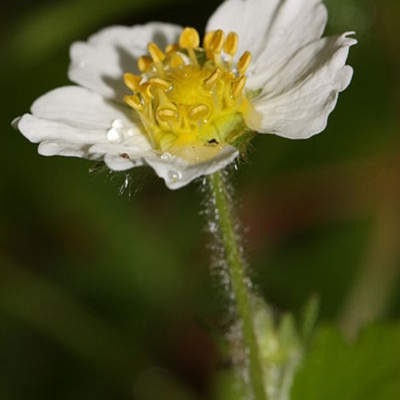

Plants for Pollinators highlights plants selected by the RHS as scientifically proven to tackle the declines in bees, butterflies and other pollinators.
Produces three-leaved rosettes of broad and silky foliage. A brilliant bloom for beginners, as it’s ideal for small pots and baskets, with its daisy-like white flowers with golden centres providing a simple, earthy beauty- and that’s just the appetiser before it bears its beloved, juicy red fruits in the late summer!
- Type: Perennial
- Height: 20-50cm.
- Flowers: April-June
- Soil Requirement: Moist but well-drained
- Light Requirement: Full Sun
- Natural Habitat: Open woodlands, grasslands
- Also known as: Alpine Strawberry
These medium-to-tall-growing plants are unique both for their clusters of button-like blooms the colour of butter and their aromatic, ferny leaves which can even be used as an excellent deterrent for pests! Eccentric and an earnest self-seeder, those cautious of the tansy can grow them in a container, but in beds and borders, it attracts bees and butterflies, and even improves the soil by adding potassium!
- Type: Perennial
- Height: 30-90cm.
- Flowers: July-September
- Soil Requirement: Well-drained
- Light Requirement: Full Sun
- Natural Habitat: Wetlands, rough grassland, verges
- Also known as: Buttonweed, Hind-Heal, Immortality

Plants for Pollinators highlights plants selected by the RHS as scientifically proven to tackle the declines in bees, butterflies and other pollinators.
Grows as a spiky spherical flower head coloured by bands of lavender florets. An ideal meadow plant which naturalises well and grows tall, and its seed heads are known to attract the wildlife. All in all, it sure does have a sharp sense of style!
- Type: Bienniel
- Height: 60–200cm.
- Flowers: July-August
- Soil Requirement: Well-drained or moist
- Light Requirement: Full sun or partial shade
- Natural Habitat: Grasslands, river banks, woodlands
- Also known as: Adam’s Flannel, Shepherd’s Staff, Venus’ Basin
Bunches of rounded, pink flowers provide an abundant supply of pollen and nectar for bees and other pollinators. Commonly found on coastal cliffs, beaches and sandunes all around the UK, these leaves are closely packed together to save moisture in the salt-laden sea air.
- Type: Perennial
- Height: 5-22cm
- Flowers: May to September
- Soil requirement: Sandy, well-drained
- Light requirement: Full sun
- Natural habitat: Coastal cliffs, grassland, salt marshes, rock gardens
- Also known as: Sea Thrift, Sea Pink, Cliff Clover

Plants for Pollinators highlights plants selected by the RHS as scientifically proven to tackle the declines in bees, butterflies and other pollinators.
For any of our customers curious about an aromatic and attractive herb that’s as pretty as it is useful and easy-to-grow… read on, it’s about thyme! These low-growing clusters of pale pink and purple petals are well-known for their common culinary use, but they make for a gorgeous ground covering which require very little fuss for the multicoloured majesty they produce. Recommended for rockeries.
- Type: Perennial
- Height: 10-20cm.
- Flowers: June-September
- Soil Requirement: Well-drained
- Light Requirement: Full Sun
- Natural Habitat: Coasts, rocky habitats, moors
- Also known as: Creeping Thyme, Elfin Thyme, Mother Of Thyme

Plants for Pollinators highlights plants selected by the RHS as scientifically proven to tackle the declines in bees, butterflies and other pollinators.
Here’s the perfect plant for those who want a bright burst of colour lasting late into autumn! The Common Toadflax bears snapdragon-like flowers with pale, buttery outer petals and golden-orange centres; complimenting the palette of summer spirit as well as falling leaves.
- Type: Perennial
- Height: 30-60cm.
- Flowers: July-October
- Soil Requirement: Well-drained
- Light Requirement: Full sun or partial shade
- Natural Habitat: Hedgerows, meadows, waste ground
- Also known as: Bread And Butter, False Flax, Jacob’s Ladder

Plants for Pollinators highlights plants selected by the RHS as scientifically proven to tackle the declines in bees, butterflies and other pollinators.
These yellow-and-orange clusters of pea-like flowers bring some fanciful flowers to your garden, but in a more down-to-earth way: hardy and low-growing, this meadow plant is an important source of nectar to certain pollinators, and its warm colouration adds a distinct summertime shine to lawns and wild gardens.
- Type: Perennial
- Height: 15-20cm.
- Flowers: May-October
- Soil Requirement: Well-drained
- Light Requirement: Full sun
- Natural Habitat: Meadows, roadsides, grasslands
- Also known as: Eggs and Bacon, Cheesecake Grass, Lamb’s Toes

Plants for Pollinators highlights plants selected by the RHS as scientifically proven to tackle the declines in bees, butterflies and other pollinators.
Bearing larger flowers and a taller, stouter stem, the Greater Bird’s-Foot Trefoil may is a vastly different flower to its siblings, with its glamorous, golden pea-like flowers growing in bunched whorls at the end of branches, as well as having darker foliage and a preference for damp soil.
- Type: Perennial
- Height: 30-45cm.
- Flowers: June-August
- Soil Requirement: Moist
- Light Requirement: Full sun
- Natural Habitat: Wetlands, ditches, riversides
- Also known as: Large Bird’s-Foot Trefoil
This is a medium to tall in height hairy plant that can stand around 1.5 meters tall. The flower colours can vary from a deep pink-purple to a pale pink-white.
- Type: Annual or Biennial
- Height: 60-120cm
- Flowers: July - September
- Soil requirement: Neutral, well-drained, dry soils
- Light requirement: Full sun or partial shade
- Natural habitat: Woodland edges, ungrazed pasture, embankment
A colourful, tall-growing wildflower, recommended for rockeries or dry stone walls. A brilliant bloom for brightening borders, as its densely clustered flowers range in colour from crimson to magenta-pink, rarely even blooming in white. What’s more, these long-lasting vivid flowers self-seed readily and attract pollinators- no wonder it’s been a popular pick for British gardens since the 17th century!
- Type: Perennial
- Height: 60-90cm.
- Flowers: May-October
- Soil Requirement: Well-drained, dry
- Light Requirement: Full sun
- Natural Habitat: Coastal areas, roadside verges
- Also known as: Fox’s Brush, Jupiter’s Beard, Pretty Betsy

Plants for Pollinators highlights plants selected by the RHS as scientifically proven to tackle the declines in bees, butterflies and other pollinators.
Though known for its fuzzy foliage and calyces, this plant's golden globes of florets in a pincushion formation are only the most well known of the Kidney Vetch's fiery potential palette of petals, with some growing in orange, pink or ruby red. These summery, fluffy flowers are also quite long-lived!
- Type: Perennial
- Height: 7–15cm.
- Flowers: May-October
- Soil Requirement: Well-drained, chalky
- Light Requirement: Full sun
- Natural Habitat: Grasslands, verges, coastal areas
- Also known as: Devil’s Claws, Mary’s Fingers, Woundwort

Plants for Pollinators highlights plants selected by the RHS as scientifically proven to tackle the declines in bees, butterflies and other pollinators.
The violet and royal blue petals that these soaring spires of petals bear are just the beginning of this flighty flora's beautiful oddities: blooming with longer, feathery-looking flowers, and even the familiar seed pods it shares with others in the legume family ripen into a deep black colour. A quirky and attractive climbing plant which does its best when planted with other tall flora to support it.
- Type: Perennial
- Height: 60–120cm.
- Flowers: June-August
- Soil Requirement: Well-drained
- Light Requirement: Full sun
- Natural Habitat: Hedgerows, river banks, woodlands
- Also known as: Bird Vetch, Canada Pea, Tine Grass
Wallflowers are associated with shyness today, but these brightly-coloured creepers in golden-yellow, amber and brick red make a bold statement in full bloom. These sweetly-scented plants are amazing as ornaments, adding a mysterious sylvan style to a cottage garden as they clamber across rockeries and walls.
- Type: Biennial
- Height: 22-45cm.
- Flowers: March-April
- Soil Requirement: Well-drained
- Light Requirement: Full sun
- Natural Habitat: Waste ground, cliffsides, quarries.
- Also known as: Bleeding Heart, Bloody Warrior, Yellow Gilliflower
Produces whorls of beetroot-coloured blooms with white markings on a hairy, crimson-tinted stem. As its name may suggest, it used to have uses in herbalism, and in the garden it’s quite popular with pollinators.
- Type: Perennial
- Height: 30-90cm.
- Flowers: June-September
- Soil Requirement: Well-drained
- Light Requirement: Partial shade
- Natural Habitat: Woodlands, scrublands, verges.
- Also known as: Hedge Stachys, Red Archangel
Choosing different wildflower plants by species gives you complete control over when you plant them, where you plant them and what the end result will be. And buying wildflower plug plants instead of seeds, means that you don't have to wait for them to germinate - perfect if speed is of the essence!
The full range of over 100 British wildflower plants species from Boston Seeds is available to buy online in trays of 25, 150 and 500 plug plants and all are available with nationwide delivery.
Want to learn more about the likes and dislikes of your favourite wildflower plants? Our handy wildflower species quide will tell you all you need to know - yours to download and keep for FREE.
Buy With Confidence



